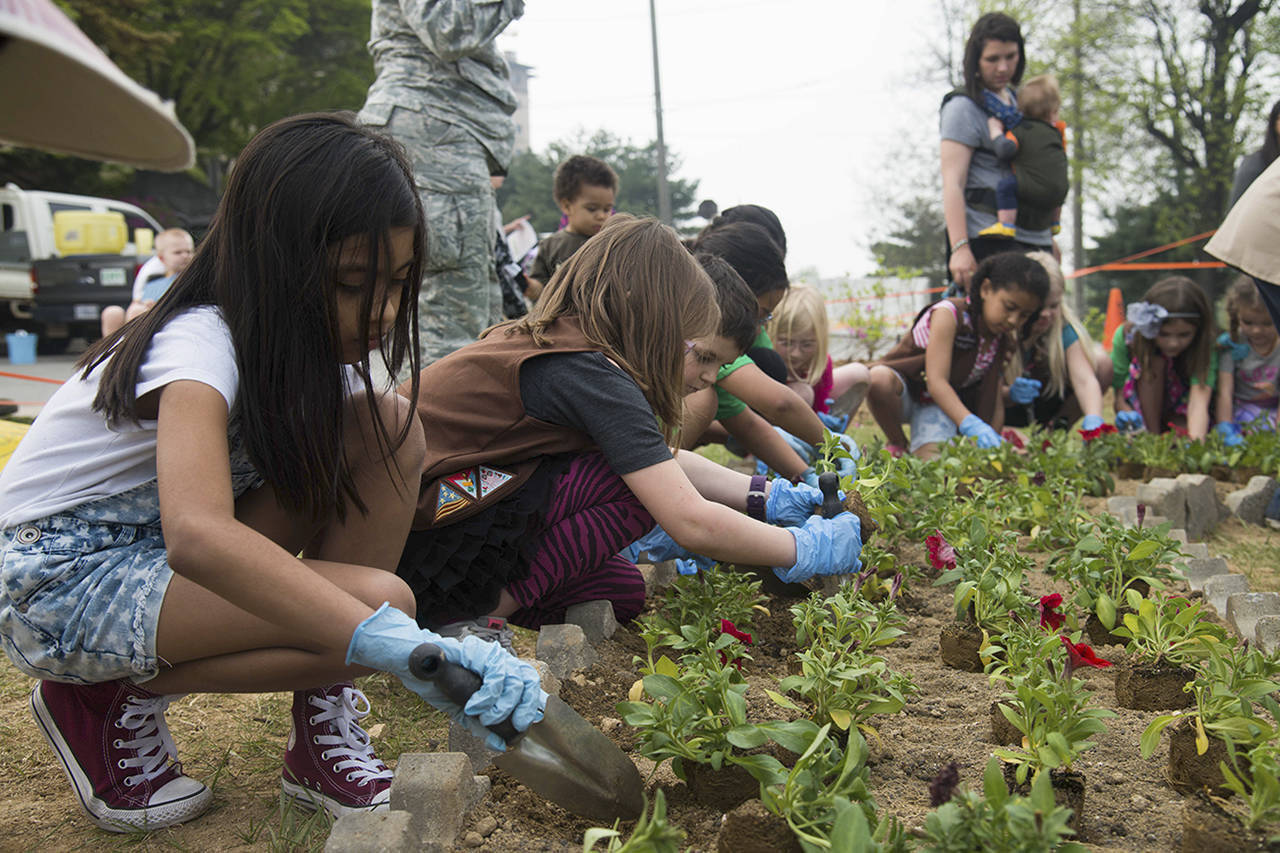By Kim Smith
WSU Master Gardener
Whether you are a parent, a grandparent or a neighbor, chances are you have had children running through your garden or yard at some point this summer. A few plant suggestions and activity ideas can make your garden even more captivating for children and youth. Getting children involved in the garden from an early age can instill in them respect and excitement for nature and gardening. Here are several activities centered around wildlife, art and edible plants to help set the stage for days of fun in the garden.
Wildlife detectives
Kids get really stoked about finding wildlife in the garden, and it’s easy to create habitat for all sorts of friendly critters. Wildlife will set up camp in the garden as long as they have food, water and shelter. To create this habitat, establish plants that flower or fruit throughout the year, provide a water source such as puddles or ponds, and provide layers of shelter in your garden with shrubs. Incorporate native flowering plants such as lupine, snowberry, columbine and yarrow to draw in native insects.
Pull out some magnifying glasses and send the children out looking for caterpillars, beetles, butterflies and bees. Add in some elderberries, hazelnuts and sunflowers, and bust out the binoculars when the birds swoop in to feast.
Show the kids how to set up habitats for reptiles and amphibians by creating small rock piles in the sun and brush piles in the moist shade. You could even have the kids help you build bird and bat houses, beehives and composting worm bins. Encourage them to record the wildlife they come across through drawing and writing in a nature journal.
Arts and crafts
Once they have their nature journals filling up with drawings of butterflies, snakes and birds, you can expand that to include their favorite plants in the garden. Get out the watercolors to paint the flowers. Children can even extract the shape and color right from flowers and leaves by smashing them with a hammer onto a piece of paper.
For a deep dive into the natural-dye world, use flowers from the garden, such as coreopsis, cosmos and hollyhocks, to make a dye pot for the kids to color their T-shirts or scarves. Some other flowers can be dried to last forever to be used in wreaths or floral jewelry, or to decorate the fort or house.
Have the kids bundle and hang easy-to-dry flowers such as strawflower, lavender, statice and celosia. Dried pods from love-in-a-mist, poppies and money plant are fun textural elements to make magic wands with and add whimsy to head wreaths.
Fun foods
There’s no better way to get kids to eat their fruits and veggies than to have them plant, grow and harvest their fown food. Help them start some vegetable seeds in small pots to watch them sprout and then transplant them in the garden.
For excitement, beauty and nutrition, plant vegetables in a rainbow of colors: pink striped beans, fiery red carrots, bright orange peppers, mini yellow watermelons, green-leafed rainbow chard, deep blue tomatoes and purple-sprouting broccoli.
For more novelty in the garden, try growing popcorn instead of sweet corn and grow bread-seed poppies for poppy-seed muffins. Many berries, such as strawberries, raspberries and blueberries are sweet, delicious, easy to pick and easy to grow in our climate. Some other fun fresh foods to make straight from the garden are berry crisps, herbal teas from fresh peppermint or chamomile, salads topped with edible flowers, and colorful roasted root vegetables.
With a little bit of planting, planning and patience, the garden may become the new favorite place for kids to play. Everyone can enjoy the wildlife, the beauty, and the delicious smells and flavors — and you might find these activities to be just as fun for kids of all ages.
For more ideas
Want to explore more about gardening with children? Google “gardening with children” using “site:WSU.edu” at the end of your search line. That will turn up scads of WSW Extension sites on the topic.
* * *
Join the WSU Master Gardener Program! A new class to learn the elements of the program begins in January. Email 2018mgtrainees@gmail.com if you are interested or would like more information.
Kim Smith, who lives in Porter, joined the WSU Master Gardener Program in 2016.



